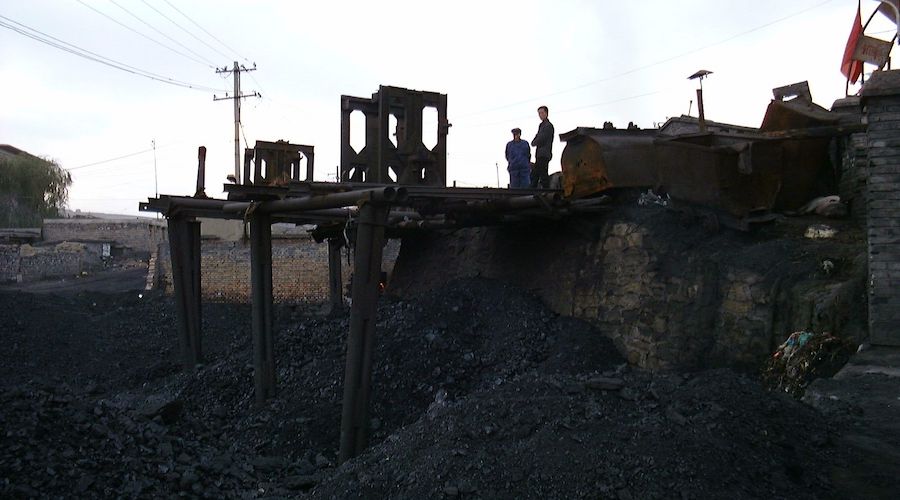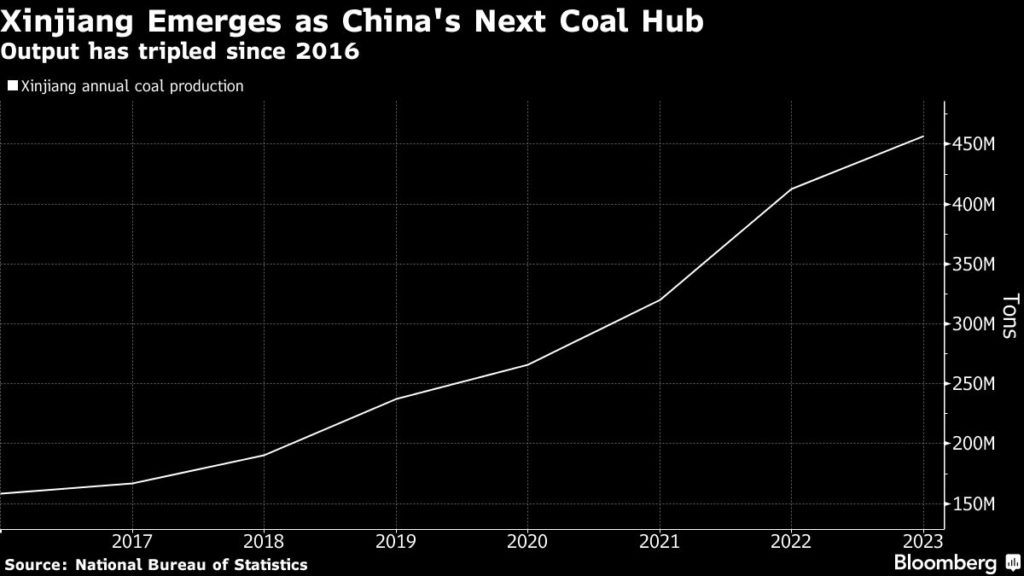
The western region of Xinjiang is emerging as a fourth hub for Chinese coal production, creating a new well of cut-price supply just as the country tries to start weaning itself off the heavily polluting fuel.
Output has surged 22% this year, the fastest growth of any region in China, and is on pace to top the half-billion ton mark by the end of December, according to data from the statistics bureau. Production costs are cheap at about 100 yuan ($13.80) a ton, far below the national average of around 370 yuan, Citigroup Inc. said.

Xinjiang’s rise up the rankings is jarring because China may be at or near its carbon peak, and cementing that shift relies heavily on using less coal. Although President Xi Jinping has vowed to start reducing nationwide consumption from 2026, several companies have announced new projects in recent months to take advantage of the region’s cheap and plentiful supply. That could undermine plans to rein in demand.
The problem historically for miners was Xinjiang’s location, thousands of kilometers from the eastern mega-cities that have traditionally consumed the most coal. But over the past decade, energy-thirsty endeavors like aluminum smelting and the production of polysilicon, used in solar panels, have shifted westward to take advantage of cheap coal and renewables.
About 80% of Xinjiang’s coal is used locally, with the rest exported to nearby provinces like Qinghai, Gansu and Ningxia, Citigroup’s analysts including Jack Shang said in a note earlier this week.
New developments in Xinjiang include plans announced in October by China Three Gorges Renewables Group Co. for six 660-megawatt coal generators to provide backup power to a massive renewables base in the south of the region. China Energy Investment Corp. also said last month it intends to spend 170 billion yuan on an integrated plant in the northwest to convert coal into oil products, a particularly intense source of emissions.
China is by far the world’s biggest producer and consumer of coal, and its other major mining hubs include Shanxi and Inner Mongolia, which each contribute over 1 billion tons a year, and Shaanxi, where output has increased to over 700 million tons.
Read More: China’s seaborne coal imports fall sharply amid shift to Russia, Mongolia supply
Comments